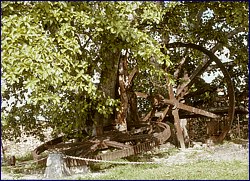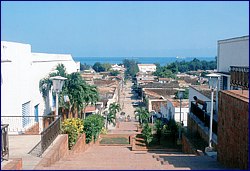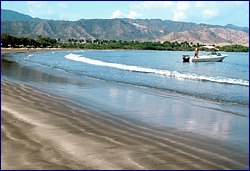 |
 |

Granma
Granma province is renowned for its battles and its natural gifts. High in the breathtaking Sierra Maestra mountains, Fidel Castro conquered Batista’s dictatorship. Down in the valley, the longest river in Cuba irrigates the fertile lands. And the towns echo with memories of slaves, conquistadors and peasants.
Named after the boat that Fidel Castro used in his revolution, Granma Province is in Cuba’s wild southwest –a great valley crossed by the Cauto River and framed by the magnificent Sierra Maestra mountains on the edge of the island’s rugged Caribbean shore. These mountains provided shelter for Castro’s revolutionaries.
But the battles began long before—in 1868 when Carlos Manuel de Céspedes of Bayamo proclaimed Cuba's independence against the Spaniards. The area’s history is intertwined with stories of slavery and struggles for independence.
| Places to visit |

![]() Bayamo
Bayamo
The provincial capital, was founded by Spanish conquistadors in 1513. At the beginning of the War of Independence in the 19th century, the city was seized and burned by Cuban rebels to prevent it from falling into the colonialists' hands. The city is now a national monument, and the rebuilt church of San Salvador de Bayamo still has some original artifacts. Horse-drawn carriages take visitors sightseeing.
![]() La Plata
La Plata
Fidel Castro's guerrilla command post deep in the Sierra Maestra can only be reached by rough paths and roads. The coastline between the mountains and the sea is marked by strips ofblack- and white-sand beaches with dive centres, resorts and rest areas.
![]() Emerged maritime terraces
Emerged maritime terraces
A national park with steep reefs and abundant fauna and vegetation. In 1999, due to its ecological values, UNESCO declared the park a World Heritage Site.

![]() Demajagua's historic ruins
Demajagua's historic ruins
At Demajagua, an old sugar mill near the village of Manzanillo, patriot Carlos Manuel de Céspedes freed his slaves and rang the liberty bell to proclaim Cuba’s independence in 1868.
 24.18°C
24.18°C




